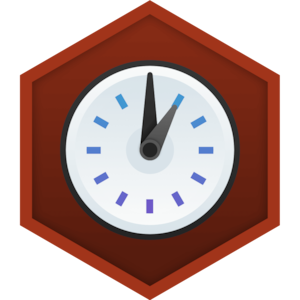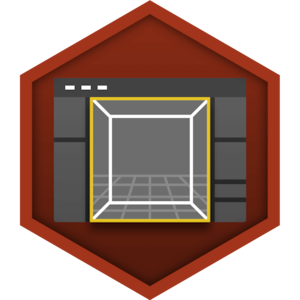Choose your operating system:
Windows
macOS
Linux
Unreal Engine 4 provides a combination of tools , editors , and systems you can use to create your game or application.
This page uses the following terms:
-
A tool is something you use to perform a specific task, like placing Actors inside a level, or painting terrain.
-
An editor is a collection of tools you use to achieve something more complex. For example, the Level Editor enables you to build your game's levels, or you can change the look and feel of Materials inside the Materials Editor .
-
A system is a large collection of features that work together to produce some aspect of the game or application. For example, Blueprint is a system used to visually script gameplay elements.
Sometimes, systems and editors can have similar names. For example, the Material Editor is used to edit Material assets, while the Material system provides the underlying support for using Materials in Unreal Engine.
This page gives an overview of the major tools and editors you will be working with inside Unreal Engine 4. The use of various Unreal Engine tools is covered in detail in feature-specific documentation.
Whether you use the Blueprint Editor to script behaviors for the Actors in your level, or create particle effects with the Niagara Editor , a good understanding of what each editor can do and how to navigate each one can improve your workflow and help prevent stumbling blocks during development.
Level Editor
Gameplay Levels
The Level Editor is the primary editor where you construct your gameplay levels. This is where you define the play space for your game by adding different types of Actors and Geometry , Blueprint Visual Scripting , Niagara Visual Effects , and so on. By default, when you create or open a project, Unreal Engine 4 will open the Level Editor.
For more information, see Level Editor .
Static Mesh Editor
Static Meshes
You can use the Static Mesh Editor to preview the look, collision, and UV mapping, as well as set and manipulate the properties of Static Meshes . Inside the Static Mesh Editor, you can also set up LODs (or Level of Detail settings) for your Static Mesh assets to control how simple or detailed they appear based on how and where your game is running.
For more information, see Static Mesh Editor UI .
Material Editor
Materials
The Material Editor is where you create and edit Materials. Materials are assets that can be applied to a mesh to control its visual look. For example, you can create a dirt Material and apply it to floors in your level to create a surface that looks like it is covered in dirt.
For more information, see Material Editor Reference .
Blueprint Editor
Blueprints
Blueprint Editor inside Unreal Engine 4. Click for full view.
The Blueprint Editor is where you can work with and modify Blueprints. These are special Assets that you can use to create gameplay elements (for example, controlling an Actor or scripting an event), modify Materials, or implement other Unreal Engine features without the need to write any C++ code.
For more information, see Blueprint Editor Reference .
Physics Asset Editor
Physics
You can use the Physics Asset Editor to create Physics Assets for use with Skeletal Meshes . In practice, this is how you implement physics features like deformations and collisions. You can start from nothing and build to a full ragdoll setup, or use the automation tools to create a basic set of Physics Bodies and Physics Constraints.
For more information, see Physics Asset Editor .
Behavior Tree Editor
AI Behavior
The Behavior Tree Editor is where you can script Artificial Intelligence (AI) through a visual node-based system (similar to Blueprints) for Actors in your levels. You can create any number of different behaviors for enemies, non-playing characters (NPCs), vehicles, and so on.
For more information, see Behavior Tree User Guide .
Niagara Editor
Particle Effects
The Niagara Editor is for creating special effects by leveraging a fully modular particle effects system composed of separate particle emitters for each effect. Emitters can be saved in the Content Browser for future use, and serve as the basis of new emitters in your current or future projects.
For more information, see Niagara Key Concepts .
UMG UI Editor
User Interface
The UMG (Unreal Motion Graphics) UI Editor is a visual UI authoring tool that you can use to create UI elements, such as in-game head's up displays, menus or other interface-related graphics.
For more information, see UMG UI Designer User Guide .
Font Editor
Fonts
Use the Font Editor to add, organize and preview Font Assets. You can also define font parameters, such as Font Asset layout and hinting policies ( font hinting is a mathematical method that ensures your text will be readable at any display size).
For more information, see Font Asset and Editor .
Sequencer Editor
Cinematics and Dynamic Events
Sequencer was used in the production of the Weta Digital animated short, Meerkat . Click for full view.
The Sequencer Editor gives you the ability to create in-game cinematics with a specialized multi-track editor. By creating Level Sequences and adding Tracks , you can define the makeup of each Track, which will determine the content for the scene. Tracks can consist of things like Animations (for animating a character), Transformations (moving things around in the scene), Audio (for including music or sound effects), and so on.
For more information, see Sequencer Overview .
Persona Editor
Animation
The Persona Editor is an animation editor within Unreal Engine 4. You can use it for editing Skeleton Assets , Skeletal Meshes , Animation Blueprints , and various other animation assets.
For more information, see Animation Editors .
Sound Cue Editor
Sound Cues
The behavior of audio playback in Unreal Engine 4 is defined within Sound Cues, which can be edited using the Sound Cue Editor . Inside this editor, you can combine and mix several sound assets to produce a single mixed output saved as a Sound Cue.
For more information, see
Paper2D Sprite Editor
2D Sprites
Use the Paper2D Sprite Editor to set up and edit individual Paper 2D Sprites . (This is, in essence, a quick and easy way to draw 2D images in Unreal Engine 4.)
For more information, see Sprite Editor Reference .
Paper2D Flipbook Editor
2D Animation
With the Paper2D Flipbook Editor , you can create 2D animations called Flipbooks. By specifying a series of Sprites along certain keyframes inside the Paper2D Flipbook Editor, those frames are then flipped through to create an animation. The best way to think of Flipbooks is similar to physical flipbooks. Sprites provide the output for frames, similar to the hand-drawn traditional animation process of inbetweening.
For more information, see Flipbook Editor Reference .
Media Editor
External Media Playback
Use the Media Editor to define media files or URLs to use as source media for playback inside Unreal Engine 4.
You can define settings for how your source media will play back, such as auto-play, play rate, and looping, but you can't edit media directly.
For more information, see Media Editor Reference .
nDisplay 3D Config Editor
Virtual Production and Live Events
nDisplay renders your Unreal Engine scene on multiple synchronized display devices, such as powerwalls, domes, and curved screens. With the nDisplay Configuration Editor , you can create your nDisplay setup and visualize how content will be rendered across all the display devices.
For more information, see Configuration Viewer .
DMX Library Editor
Live Events
DMX in action. This screenshot is from a sample project by Moment Factory. Click for full view.
DMX (Digital Multiplex) is a standard for digital communication used throughout the live-events industry to control various devices, such as lighting fixtures, lasers, smoke machines, mechanical devices, and electronic billboards. In the DMX Library Editor , you can customize these devices and their commands.
For more information, see DMX .





